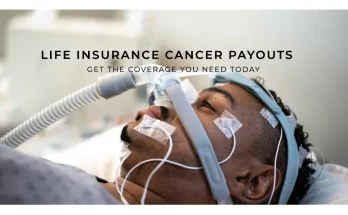Microinsurance has emerged as a crucial tool in providing financial protection to low-income individuals and communities against various risks. While it offers several benefits, it also comes with its own set of challenges. In this article, we’ll explore the advantages and disadvantages of microinsurance to provide a comprehensive understanding of this important financial service.
Advantages of Microinsurance
1. Financial Inclusion
Microinsurance plays a significant role in promoting financial inclusion by providing access to insurance services for those who have traditionally been excluded from the formal insurance sector. It allows low-income individuals and marginalized communities to safeguard their assets and livelihoods.
2. Risk Mitigation
One of the primary advantages of microinsurance is risk mitigation. It helps individuals and families cope with unexpected events such as illness, accidents, or natural disasters without falling into severe financial distress. Microinsurance policies can cover medical expenses, property damage, and other unforeseen costs.
3. Affordability
Microinsurance policies are designed to be affordable for low-income individuals. The premiums are often minimal, making it accessible to those with limited financial resources. This affordability ensures that even the most vulnerable populations can benefit from insurance protection.
4. Tailored Products
Microinsurance products are often tailored to the specific needs of the target population. This customization ensures that the policies address the most relevant risks faced by individuals in different regions and sectors. Tailored products can include crop insurance for farmers, health insurance for families, and property insurance for homeowners.
5. Social Impact
Microinsurance has a positive social impact by promoting resilience and stability within communities. When individuals are protected against financial shocks, they are more likely to invest in education, health, and small businesses. This, in turn, contributes to poverty reduction and economic development.
Disadvantages of Microinsurance
1. Limited Coverage
One of the main disadvantages of microinsurance is limited coverage. Due to the low premiums, policies may have restricted coverage compared to traditional insurance plans. This can result in policyholders not receiving adequate compensation for their losses.
2. Complexity of Claims Process
The claims process for microinsurance can sometimes be complex and time-consuming. Many policyholders may not fully understand the terms and procedures, leading to challenges in filing claims. This can discourage individuals from pursuing their claims, resulting in underutilization of the insurance.
3. Sustainability
Ensuring the sustainability of microinsurance programs can be a challenge. Low premiums and high administrative costs can make it difficult for insurers to maintain profitability. This may lead to the discontinuation of programs or reduced benefits for policyholders.
4. Lack of Awareness
In many cases, there is limited awareness among the target population about the benefits of microinsurance. Without proper education and awareness campaigns, individuals may not see the value of investing in insurance, leading to low uptake rates.
5. Insufficient Regulation
The lack of regulatory framework for microinsurance can pose risks for policyholders. In some regions, there may be inadequate oversight of microinsurance providers, leading to potential exploitation or inadequate protection for policyholders.
Conclusion
Microinsurance offers several advantages in terms of financial inclusion, risk mitigation, affordability, tailored products, and social impact. However, it also comes with disadvantages such as limited coverage, complex claims processes, sustainability challenges, lack of awareness, and insufficient regulation. It is crucial for policymakers, insurers, and stakeholders to address these challenges to ensure that microinsurance continues to be a valuable tool in providing financial protection to low-income individuals and communities.
https://www.linkedin.com/pulse/latest-microsoft-dp-600-real-exam-question-marwa-malik-cuabe
https://www.linkedin.com/pulse/pass-your-comptia-sy0-701-exam-question-2024-marwa-malik-2q5we




